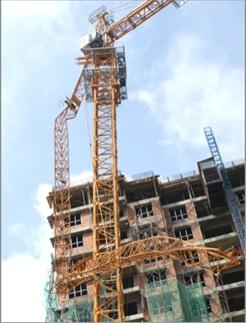Bolt And Nut Failure At The Slewing Ring Of The Tower Crane

Figure 1: Tower Crane At the Accident Area.
Based on the preliminary investigation, it was found that the failure of bolts and nuts at the slewing ring has caused the collapse of the boom, slewing table and cabin. Crane safety, especially related to the failure of critical components such as bolts and nuts, load sensor and wire rope is under scrutiny.
- The owner must ensure all load indicator shall be fitted to the tower crane and always function which automatically gives an audible and visible warning to the operator when the crane approaching its safe working load;
- The owner must ensure that all tower cranes are operated by registered and competent operators;
- The slewing ring should be examined for weld cracks when dismantled and before each erection;iii. The slewing ring should be examined for weld cracks when dismantled and before each erection;
- High tensile bolt and nut must be replaced in accordance with the manufacturer’s recommendations. The components should be inspected and replaced if any defect presents based on manufacturer recommendation;
- Bolted connections must tightened by torque wrench in accordance with the method specified by the manufacturers; and
- Inspection and maintenance work shall be performed by registered competent firm.
- Health and Safety Executive,2007 High Tensile Bolt Connections On Tower Crane, United Kingdom.
- Code Of Practice For Safe Use of Tower Cranes.
- Tom Barth,March 2008,Modern Contractor Solutions Summerville,SC














